Martin Scorsese on chilling ‘Killers of the Flower Moon’: ‘Maybe we’re all capable of this’
- Oops!Something went wrong.Please try again later.
- Oops!Something went wrong.Please try again later.
- Oops!Something went wrong.Please try again later.
NEW YORK – In his harrowing new crime epic, Martin Scorsese brings you face to face with pure evil.
“Killers of the Flower Moon” (in theaters Friday) tells a real-life American horror story, as dozens of members of the Osage Nation were murdered for their money and oil-rich land in 1920s Oklahoma. The film is unflinching in its violence as well as its heartache, showing how a young Osage woman named Mollie (Lily Gladstone) is swept off her feet by the charismatic but cunning Ernest Burkhart (Leonardo DiCaprio), a white man who conspires to kill her entire family.
“I wanted to immerse the audience in this world,” Scorsese says, seated at a hotel overlooking Central Park last month. With the participation of the Osage community, he shot the movie in Pawhuska, Oklahoma, where many of the actual murders took place. Some of the locations, including a doctor’s office and Masonic lodge, have remained largely unchanged over the last century, which added to the grim reality of what they were filming.
“We just persevered through it,” Scorsese says. “It was weighty, there’s no doubt about it.”
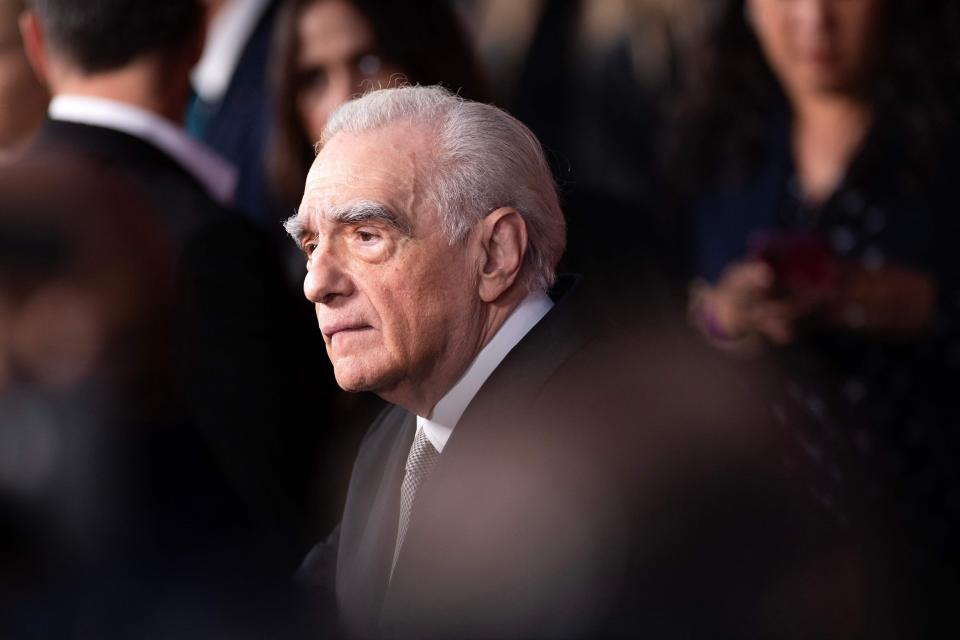
'In our own human nature, anyone could do it'
“Flower Moon” is Scorsese’s first narrative feature since 2019’s “The Irishman,” and tackles many recurring themes of his six-decade filmography, including power, greed, love and betrayal.
“In a way, this grew out of ‘The Irishman,’ ” Scorsese says, noting how both films wrestle with “the passage of time and a sense of mortality.”
"Killers" is adapted from David Grann’s 2017 nonfiction book, which traces how the federal investigation into the Osage murders led to the birth of the FBI. DiCaprio was initially cast as lead investigator Tom White (now played by Jesse Plemons), who was the central protagonist in early drafts of the script. But at DiCaprio’s suggestion, Scorsese and co-writer Eric Roth shifted the focus to Mollie and Ernest, in an effort to put the Osage Nation front and center.
Fact check: 'Killers of the Flower Moon' is a true story, but it underplays extent of Osage murders
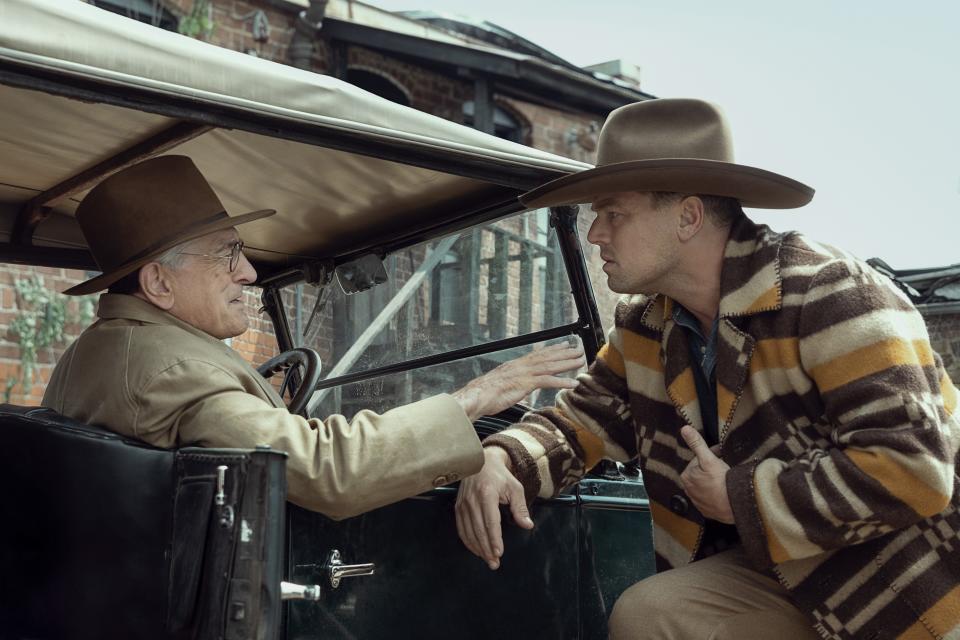
Ernest is encouraged by his two-faced uncle, William Hale (Robert De Niro), to marry into Mollie’s wealthy family. The self-proclaimed “King of the Osage Hills,” Hale was well known for his generous contributions to the Osage community. But he was later convicted of murdering his friend, an Osage man named Henry Roan (William Belleau), on whom he had taken out a $25,000 life insurance policy.
“I don't get how he can make that dichotomy in his thinking,” Scorsese says of Hale's actions. “And yet, if he could do it, that means that in our own human nature, anyone could do it. And that's the fear: that maybe we're all capable of this sort of thing."
'This doesn't happen in Hollywood, ever'
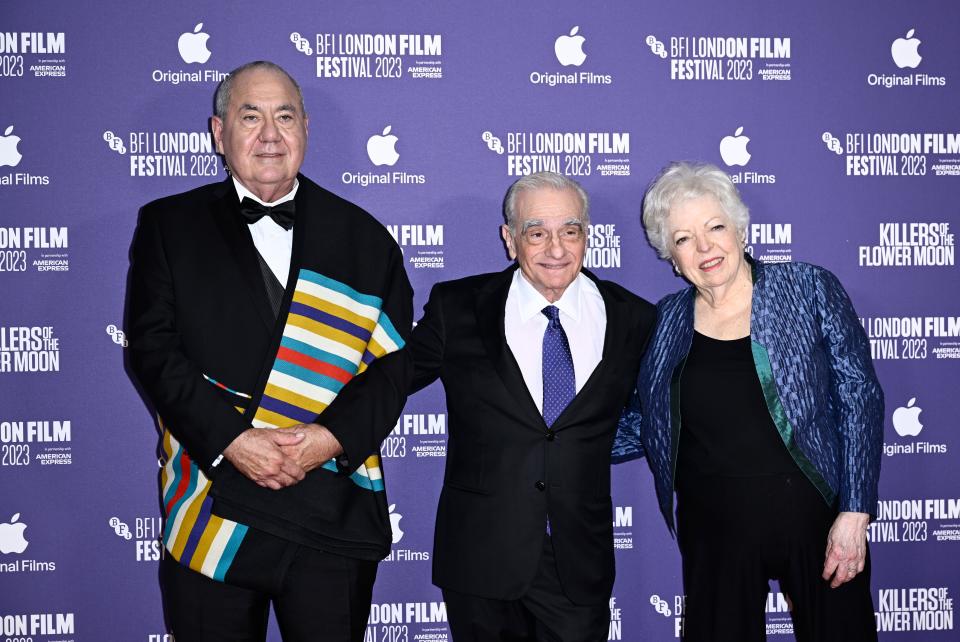
Despite Scorsese’s Oscar-winning pedigree ("The Departed"), his desire to tell this story was met with understandable trepidation from the Osage people. After all, he’s a white director best known for mob dramas including “Goodfellas," "Casino" and "Mean Streets."
“‘We love your movies, but we’re concerned that in your movie, we’re all just going to be dead bodies,’” Geoffrey Standing Bear, principal chief of the Osage Nation, recalls telling him. “We were concerned that the violence would just show us as backdrop.”
“It’s very sensitive for our Osage people,” adds Chad Renfro, a consulting producer and Osage ambassador. “When I was growing up, our elders always said, ‘We don’t talk about that.' It was so extraordinarily traumatic.”
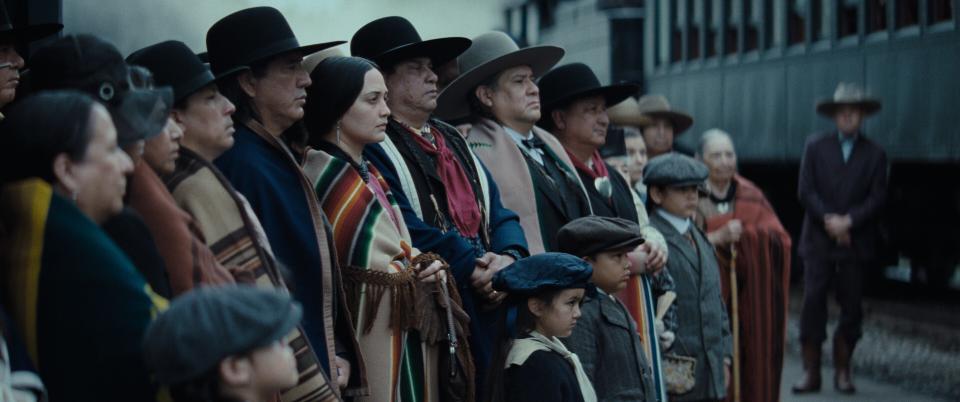
To help reassure them, Scorsese sent Standing Bear a DVD of his 2016 movie “Silence,” which follows 17th-century Portuguese Jesuits facing persecution. The Gray Horse Osage community also hosted a dinner for the director to hear the concerns of tribal members, many of whom had relatives who were murdered during the five-year period known as the Reign of Terror.
“Johnny Williams, who was an elder in the Gray Horse community, was on set every day overseeing a lot of the things that were culturally sensitive," Renfro says. "Chief Standing Bear also put together a list of consultants to make sure that our language, our music, our clothing and our ways were respected.”
“We had guidance from a lot of people in the Osage Nation,” says Scorsese, who added more Osage-language dialogue throughout, in part because the actors loved speaking it. For everyone, "it was a process of discovery.”
For Native American actors, it was a "once-in-a-lifetime experience,” says Welana Fields Queton, a board member for the Osage Nation Foundation who acted as a background extra. Among the top-grossing 1,600 movies of the last 16 years, only one had a Native lead character (2020's "The New Mutants"), according to a new study by the Annenberg Inclusion Initiative.
Working on this film, "everyone on set was Native, so all we did was joke and talk about Native things. That was beautiful. This doesn’t happen in Hollywood, ever," Queton says. “Scorsese is opening the avenue for the proper way to come into a community: by going through our leaders and our elders."
'Give the same respect to cinema'
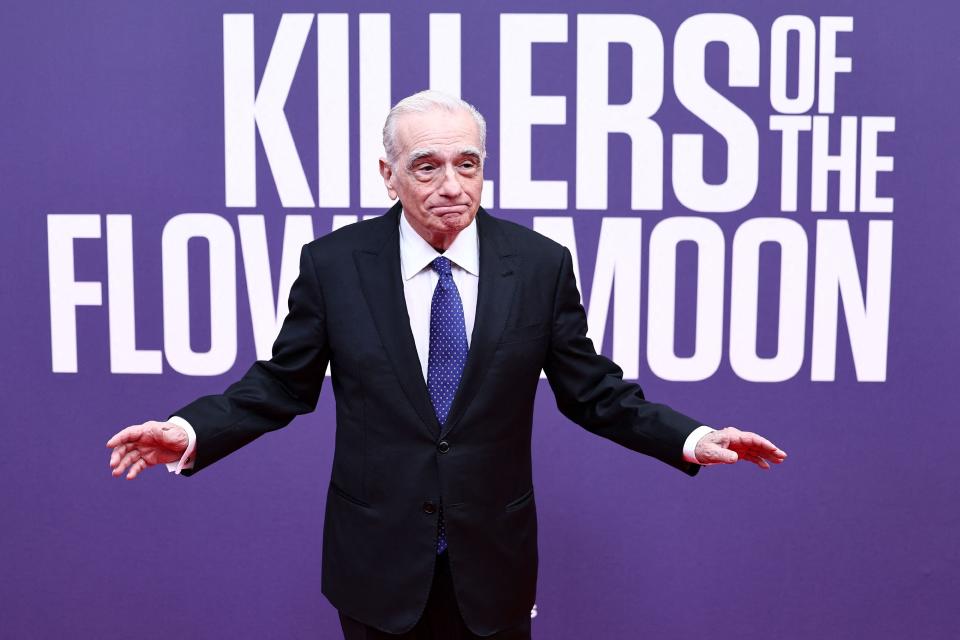
With its grave subject matter, R rating and 3 ½-hour running time, the critically acclaimed “Flower Moon” faces a steep uphill battle at the box office, compounded by its reported $200 million budget. The film’s stars have been unable to promote the project due to the ongoing actors’ strike, although it’s still expected to win the weekend with a $30 million opening, says Shawn Robbins, chief analyst at Box Office Pro.
“This is the kind of adult-driven prestige film that has considerable upside at the box office in today's world,” Robbins says. “DiCaprio and Scorsese have one of the most critically and commercially fruitful histories of any star-director duo," with past hits including "Shutter Island" and "The Wolf of Wall Street."
Scorsese feels encouraged by last summer's "Oppenheimer," another cerebral three-hour drama that has grossed nearly $950 million worldwide.
That film, coupled with the success of "Barbie," proved "that people will go out to have an experience in a theater together," Scorsese says. "I hope that follows through with ‘Killers of the Flower Moon.' People say, 'Well, there's length.' You do this in front of your television for five hours. You go to a theater and watch a play that's 3 hours and 20 minutes, and you're respectful. Give the same respect to cinema."
'What do we do, not talk about it?'
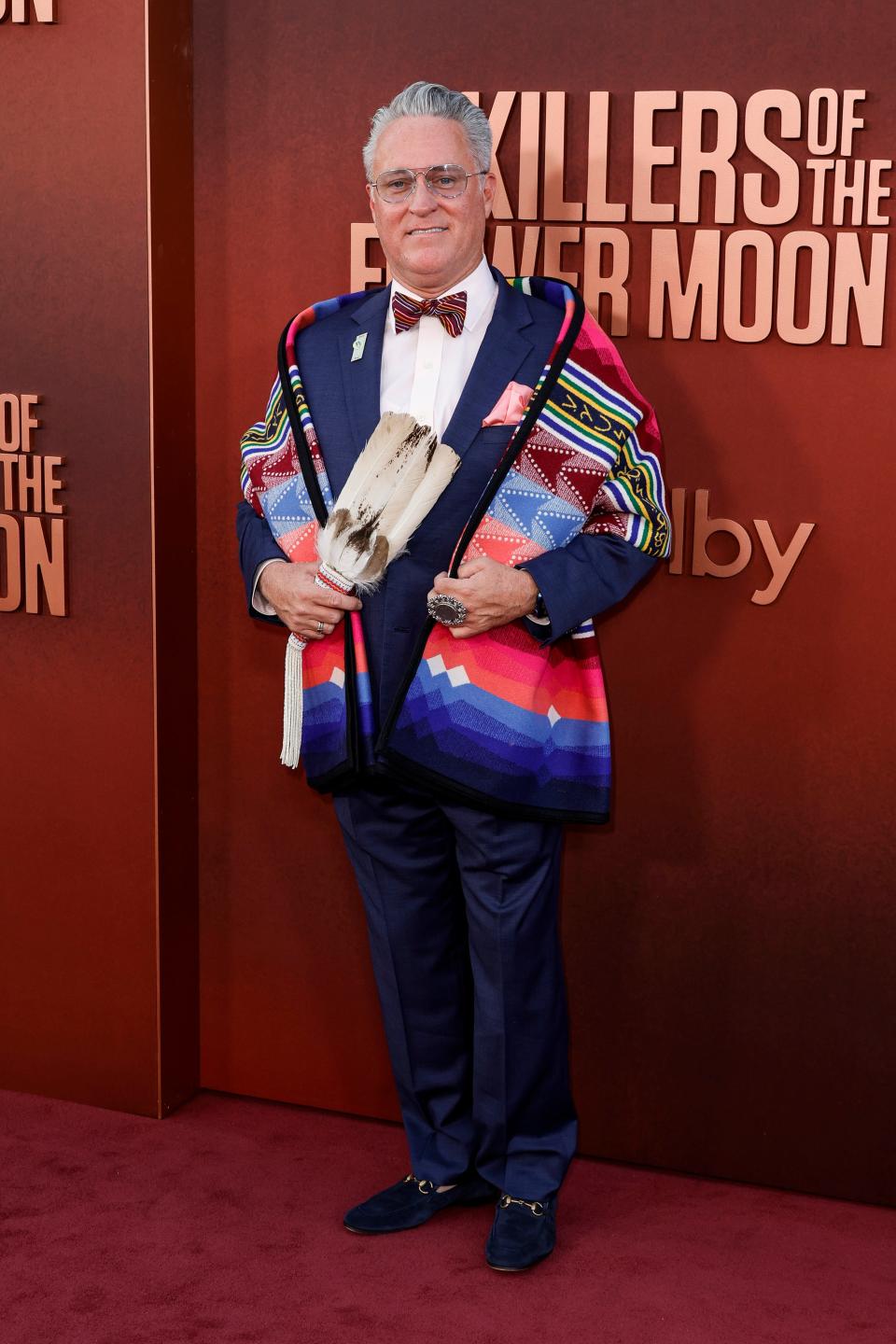
Regardless of its awards or box-office haul, Renfro hopes that "Flower Moon" will help give Native talent more opportunities in front of and behind the camera.
"One of the best things that can come from this film and this atrocity and uncovering it is for Native representation to grow," Renfro says. "We haven't had a chance to shine like this many times before."
Nonetheless, the film has stirred some complex feelings in the Osage community. Christopher Cote, an Osage language consultant on the project, gave a measured critique to The Hollywood Reporter earlier this week, saying that the film is told from Ernest’s perspective and “isn’t made for an Osage audience.”
“I would agree,” Queton says. "There is a bigger part of the story of who we are as Osage. I know Scorsese did his best in trying to give a little background of where we came from. But we have a large history before (the Reign of Terror), and I hope other people take interest in that and learn about us."
Still, Scorsese hopes that "Flower Moon" can bring awareness to a brutal yet "important" part of American history that many audiences may just be learning about.
“I’m 80 now, and I kept thinking, ‘Well, everybody should know that; everybody should know this.’ There are people who don’t even know about World War II,” Scorsese says. “So what do we do, not talk about it? Let’s show it. Let's talk about it. Because it’s happening again; look at what’s happening around the world.
“It might get some people upset, but you’re going to go through life without being upset? It’s not going to happen.”
'Killers of the Flower Moon' review: Martin Scorsese crafts a gripping story of love, murder
This article originally appeared on USA TODAY: Martin Scorsese, Osage consultants talk ‘Killers of the Flower Moon’

